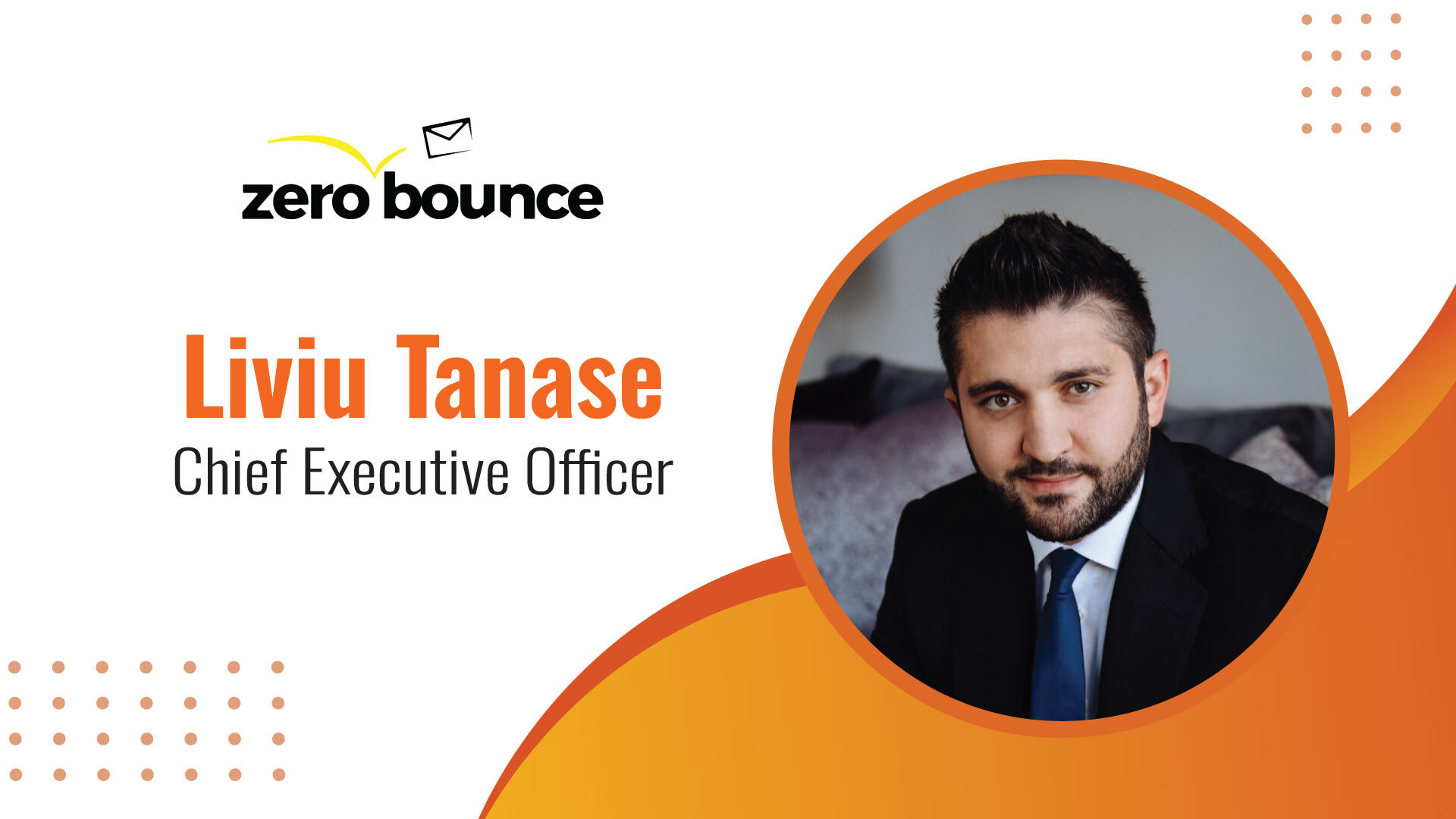
email marketing
GetResponse’s Erica Grodin Shares Keys to Scalable, High-Performing Affiliate Programs
email marketing 29 Apr 2025
1. What strategies can businesses use to attract high-performing affiliates and maximize conversions?
Top affiliates reach that level because they’re strategic with their time and choose programs that genuinely invest in them. So, if a business wants to attract those high-performers, it needs to make joining and promoting the program as easy and rewarding as possible.
That starts with a straightforward commission structure affiliates should instantly understand the value. Providing ready-to-use materials like templates and copy removes friction and helps them start promoting right away.
But more than that, it’s about building a real relationship. Affiliates want to know there’s someone on the other end who actually cares about their success. The best performers also expect a bit of a VIP experience, so making them feel valued from the beginning and continuing to show up for them is what keeps them engaged and delivering results.
2. How do higher commission structures impact affiliate engagement and long-term loyalty?
High commissions are great for grabbing attention, but they’re not enough to keep affiliates around. If it’s just about the payout, it’s easy for them to bounce from one program to the next.
What really drives long-term loyalty is the relationship making affiliates feel genuinely valued, heard, and supported. If a business wants to build a program that stands the test of time, it has to go beyond commissions. That means offering ongoing incentives and creating an experience that keeps affiliates engaged and excited to stick around. In our updated GetResponse Affiliate Program, we are committed to providing ongoing support to our affiliates. This includes monthly update newsletters, quarterly one-on-one sessions with our team, and exclusive access to the GetResponse Affiliate Slack channel available at the Gold subscription level.
3. What are the key performance indicators (KPIs) for measuring affiliate marketing success?
At the end of the day, revenue is the ultimate KPI. Metrics like traffic, clicks, and free trials matter they help gauge the quality of the traffic an affiliate is driving. But on their own, they don’t move the needle. They’re leading indicators, not end goals. If those actions aren’t converting into real revenue, they don’t hold much weight in the long run.
4. How can businesses align their affiliate program with broader digital marketing strategies?
Your affiliate program should function like an extension of your sales team. That means keeping brand messaging consistent and making sure affiliates are in sync with your broader marketing efforts. Share product updates, upcoming launches, and campaign roadmaps when you can and stay connected through regular newsletters or check-ins.
Cross-channel alignment is key. If your SEO team knows what keywords are driving traffic, pass that insight to affiliates so they can fine-tune their content. And make sure affiliates play nicely with other channels, like influencers or paid media, so they’re adding value not stepping on toes.
5. How can brands ensure transparency and trust in their affiliate partnerships?
Transparency and trust start on day one. Your website should lay it all out - how affiliates earn, the exact commission structure, how and when payments happen, and what kind of support they can expect. Real success stories help too, giving potential partners a glimpse of what’s possible.
Setting clear expectations from the start builds trust. From there, it’s about consistency - keeping affiliates in the loop with resources, monthly updates, and being available when they need help. When affiliates feel informed and supported, they’re far more likely to stick around and succeed.
6. What challenges do companies face when scaling an affiliate marketing program, and how can they overcome them?
The biggest challenge in scaling an affiliate program is doing it without sacrificing efficiency. What works fine with 20 affiliates can quickly break down with 200. That’s why it’s crucial to build with scale in mind from the start.
Automation is key especially when it comes to onboarding and giving affiliates easy, self-serve access to the resources they need. A solid affiliate management platform, like PartnerStack, can make a big difference by streamlining workflows and keeping operations smooth as the program grows.
Martech Edge Interview with Dmytro Kudrenko, Founder and CEO, Stripo
email marketing 22 Feb 2024
Welcome, Dmitry! You have been involved in various entrepreneurial ventures throughout your career; what drives you to pursue new opportunities and challenges as a founder and CEO?
Thank you for the warm welcome! My journey from coder to entrepreneur was fueled by a desire to make a tangible impact. It all started with a realization—true innovation isn’t just about writing code; it’s about solving the challenges that people face every day.
What motivates me is the potential to drive change through technology. Take Stripo, for example. We wanted to make email marketing easier for everyone, especially those without coding skills. One of the most rewarding moments at Stripo was when a user shared how our platform transformed their business by saving time and enhancing their marketing strategy. This kind of feedback is a powerful reminder of why we do what we do.
For me, the drive comes from seeing the difference that our technology makes in people’s lives. Learning, adapting, and preparing for the future are what inspire me every day in this entrepreneurial journey.
How did you start Stripo? What was the initial idea behind establishing the company?
When we started Stripo, I had already been in email marketing for 10 years and saw a big problem. Email marketers often struggled to make HTML emails look good on different email clients and devices. Usually, you need to know how to code to do this, but many marketers didn’t have these skills. They had to spend time learning to code instead of doing their main marketing jobs, which was a real headache. They had two choices: ask for help from developers, which wasn’t always easy, or try to learn coding themselves.
At Stripo, we wanted to fix this. Our idea was to let marketers easily create great-looking HTML emails without having to know how to code. This would free them to focus more on their marketing plans and other important work. Our first slogan was all about this: “Build beautiful HTML emails fast without coding skills.”
Actually, many have tried to solve this problem, but I’ve noticed that they most quickly move on to higher-level tasks sending emails, analyzing, and personalizing—forgetting about the foundation they started with and never fully completing the task. We believe in doing one thing well, so we’ve chosen to focus solely on email creation and process optimization around it. For the past seven years, we’ve been dedicated to this and still see a roadmap full of improvements for years to come.
Stripo is a powerful tool that helps businesses create stunning and responsive emails in minutes. How does the Stripo Editor streamline the workflow of email design and development? How does embedding the plugin enhance the user experience and productivity?
It’s crucial to understand that creating emails isn’t just about crafting quality, professional HTML, or how it appears in Outlook and Gmail. What’s more important is what exactly in the email looks good. Stripo allows marketers to focus on the message, which involves many steps:
- Planning
- Coordination
- Design
- Copywriting (sometimes in multiple languages)
- Coding
- Deployment and integration
- Testing
- Analytics
At each step, various specialists are involved, spending time on coordination and revisions. Our initial priority was to find ways to minimize revisions throughout the testing and coordination process. At Stripo, we aimed to preserve the designer’s original vision in each iteration and maintain control over modifications. We strive to implement the principle of built-in quality. Whatever you do, it always works and adheres to the rules and standards.
While Stripo is an exceptional tool, it’s essential to recognize that it represents yet another tool for marketers. Hence, it was a priority for us to ensure one-click integration with as many systems as possible. We support integration with over 80 email service providers (ESPs) and various platforms, streamlining the workflow for marketers. This integration capability is a testament to our commitment to making email creation and deployment as seamless and efficient as possible, allowing marketers to focus more on strategy and less on technicalities.
From the outset, we designed our editor with the vision that it should be effortlessly usable by other vendors (ESPs, CDPs, etc.), enabling them to customize its functionality to meet their specific needs. If a user aims to enhance the quality and speed of email creation, we focus on facilitating one-click integration.
For vendors looking to elevate this experience for their customers, we ensure that minimal development is needed for integration. Just a couple lines of code, and our editor can be embedded within another product with the help of the plugin. The plugin is popular among software companies of all sizes, from small startups to big corporations. Essentially, it’s for any website, CRM, ESP, or other tools that need a modern, easy-to-use drag-and-drop email builder.
You have a strong passion for Lean principles and how they can improve email marketing. How have you implemented Lean principles in your work at Stripo, and what are the benefits for your customers?
For sure, I am a big fan of Lean principles. At Stripo, we’ve cultivated an environment where errors are seen as learning steps. The key is to eliminate the fear of failure among team members. When mistakes happen, we don’t blame anybody for them; instead, we learn from them, support each other, and move forward swiftly. Additionally, we regularly release updates and focus on continuous improvement, prioritizing what will bring the most benefit to our customers from our efforts. Take a look at our Release Notes, which we’ve been publishing for seven years. It shows how frequently and how much we do, as well as how much time we dedicate to fixing bugs.
Here are my recommendations on how to incorporate Lean strategies into email marketing:
- Be ready to adapt your strategy. In the fast-paced business world, waiting for a complete strategy can lead to missed opportunities. It’s better to determine a general direction and take initial steps. Learning and adapting from ongoing data is key. For instance, a comprehensive email marketing strategy might become irrelevant by the time it’s finalized.
- Embrace the MVP approach. Instead of fully developing an idea from the start, begin with a basic version. For instance, when dealing with abandoned shopping carts, you might be uncertain about the specific item left in the cart. In this case, send a general reminder about the incomplete purchase, along with a link to your site for completion. This simple action is more effective than no action at all.
- Include experiments in mass mailings. Continual experimentation is crucial for success in mass email campaigns. Each mailing should be viewed as an opportunity to learn and test hypotheses about your audience.
- Always focus on mistakes. In Lean methodology, defects are considered a form of waste. Addressing errors promptly is essential. For example, quickly fixing a broken link in an email trigger minimizes the negative impact. Even small overlooked errors can lead to significant issues.
- Take a look at the ShuHaRi model, inspired by Japanese martial arts, which represents stages of learning and mastery that are applicable to the evolution of business communication.
The ShuHaRi model consists of three stages:
- Shu: Following established best practices
- Ha: Experimenting and adapting these practices
- Ri: Innovating and establishing new practices
In email marketing, this model helps to focus on appropriate metrics at each stage, evolving from implementation to experimentation and innovation.
During the Shu phase, email marketers should prioritize implementation depth over traditional metrics such as Open Rate or Click-Through Rate. The key is how well strategies are executed, as this impacts revenue the most while also considering the time invested. In the Ha stage, experimentation is crucial. You’ll challenge standard practices and seek alternatives by analyzing past campaigns. Once you have mastered the basics, in the final Ri stage, you transition from merely following guidelines to setting your own and fostering innovative development within your organization.
Additionally, our goal at Stripo is to refine processes to minimize waste and maximize resource use. We emphasize quality in everything we do, from the emails we craft to the overall customer experience. We strive to be a company where innovative ideas are not only generated but also brought to fruition, regardless of the challenges in resources, time, or people.
Your solution enables marketing teams, especially email marketers, to create personalized and engaging campaigns that resonate with their audiences. How does your solution achieve this goal, and what features make it stand out?
We have a wide range of features that make us stand out, including the following:
1. Modular email design: This lets you build email components once and use them in many campaigns. It speeds up email creation, keeps your brand consistent, simplifies edits, and reduces testing. Users can separate design from data for fully automated email production.
2. WYSIWYG Editor: This stands for “What You See Is What You Get.” It shows email content in the editor as it would appear in subscribers’ inboxes. Users can edit mobile and desktop versions differently to suit their needs.
3. We’re integrated with over 80 ESPs, including big names such as Mailchimp and HubSpot and clients such as Outlook and Gmail. Stripo enables easy email exporting to platforms without hassle.
4. We offer over 1,500 ready-to-use email templates suitable for various industries and events.
5. Interactive module generator: This new tool lets users create interactive games (such as wheels of fortune, scratch cards, and questionnaires) without coding. It provides an AMP version, an interactive HTML fallback, and a text fallback to cover all email clients.
6. Brand guidelines kit generator: Users can easily create a brand book from their templates to ensure consistency in all newsletters.
7. Stripo’s Email Translate service enables businesses to localize newsletters for global markets with over 100 languages. It offers direct integration with Google Translate for instant translations in the email editor. In addition, it is possible to download XLS and JSON files with translations made by professional translators.
8. Email client preview: Our tool allows previews across 90+ devices and major email clients.
Each feature aims to make email marketing easier for users. When we think of new features, we always consider how they will simplify email creation.
Stripo’s email template library offers a unique competitive advantage over other vendors in the market. What key features make the email template library different and stand out from the rest?
I would say that a template is a good starting point for creating your own design, but the routine of working with the same templates can quickly become monotonous.
We ensure that our templates are structured and equipped with a set of modules that allow for the rapid creation of new emails daily.
So, our strength lies not just in our template library but more so in our module library.
Additionally, we create processes to ensure that once brand design rules are established, they are difficult for other team members to deviate from in daily use.
How do you see the future of email marketing evolving, particularly in the context of Lean principles and faster delivery of value? What emerging trends and best practices should marketers be aware of?
The core value of Lean is continuous improvement. For marketers, this translates into one thing: test, test, and test again
To ensure that testing is worth more than its cost, we must optimize routine processes significantly. Part of this optimization is where we come in at Stripo.
Regarding trends, I believe most tasks will be delegated to machines, allowing marketers to focus not on sending emails but on the value they bring to communications. This should be the case now, but with technology being so diverse, much time is spent mastering it.
Stripo is open to new partnerships and collaborations. What key factors or criteria do you consider when choosing a potential partner that would create a mutually beneficial relationship?
We’re wholeheartedly diving into projects aimed at one main goal: making email communication better. This means helping marketers easily bring their ideas to life and ensuring that customers get exactly what they expect from vendors.
For example, right now, we’re proud to have over 80 integrations with different ESPs, and we’re always excited to team up with more to give our users even more options for sending their emails.
If we’re talking about teaming up for marketing efforts, it’s key that our future partners are on the same page as us about where email marketing is headed. Also, we really care about with whom we partner. They need to have a good name in the industry for being reliable, delivering top-notch quality, and playing fair and square. And let’s not forget about keeping data safe and private. Our partners need to take this as seriously as we do, with strong measures in place to keep everyone’s information secure.
Additionally, we consistently participate in educational programs, conferences, and similar events to support our mission of shaping the evolution of email marketing.
MarTech Edge Interview with Liviu Tanase, Chief Executive Officer, ZeroBounce
email marketing 30 Nov 2023
Welcome, Liviu! What inspired you to start ZeroBounce, and could you provide an overview of the company's evolution from its inception to its present standing?
Thank you very much for your interest and for allowing me to tell you the ZeroBounce story.
Inspired is the word for how I felt during and after the initial brainstorming for developing an enhanced email list scrubbing software. Like so many big ideas, the catalyst was a personal need for an email validation program that could identify invalid email addresses for removal.
At the same time, I started hearing about email-related pains from all kinds of business people, from solopreneurs to CEOs – everything from emails landing in spam to no delivery at all. I could see that the problem was primarily inadequate email hygiene. Instead of making an email validation platform just for me, it became clear this could help people in all kinds of industries to an unbelievable extent.
Our core product became email validation, and because it was accurate and easy to use, it helped ZeroBounce stand out among competitors. We listened intently to our customers and heard what their email struggles were. So, we started adding more tools designed to help you reach the inbox. We now offer an email scoring tool, email deliverability testing, blocklist monitoring, and DMARC monitoring.
We recently released our Email Finder tool. After using so many email-finding services that would provide invalid email addresses, it was clear that there must be a better way. So, we developed an email finder that identifies the email address while ensuring it has yet to be abandoned or has some other problem.
We can help pretty much anyone who wants a more significant number of the emails they send to land in their recipients' inbox. From promotional to transactional emails, we've checked them all.
Having an Entrepreneurship and Business Administration foundation, how has your educational background influenced your strategy in establishing five companies?
When I think back to my educational foundation, it needs to be specific facts or algebraic formulas that come to mind. Learning and self-teaching are the most important things I've picked up from educators.
I can't remember the teacher who introduced me to qualitative learning, but it's stayed with me more than anything. Instead of learning many things, qualitative learning focuses on the quality of what you learn. It was a real paradigm shift: focusing on the quality of the material you're trying to retain creates a superior outcome over stockpiling tons of information and concepts of varying worth.
So, when I began establishing my companies, I thought back to these concepts and realized that I needed to find a fun and engaging way to pass them along to my team. Furthermore, I wanted to ensure that everyone who wanted to go on the journey with us had the same understanding of the importance of education. We push the quality of learning and teaching to this day and are always happy to assist in everyone's continuing education, from new hires to the corporate boardroom.
I'm also continuing my education and am currently enrolled in Harvard Business School's Owner/President Management program. The day-to-day practice of running a business ultimately makes you an entrepreneur. But getting continuous education – in every career stage – is invaluable.
How does ZeroBounce's email scoring system work, and how does it benefit clients in improving their email campaigns?
The greatest benefit of using an email scoring service is that you filter out potentially invalid leads to focus on the most valuable ones.
Frequently, administrators set up catch-all email accounts to collect all of the emails sent to a domain. That way, there are no bounces. They do this with the intent that, hopefully, no emails will "slip through the cracks." However, some catch-all emails will bounce – the challenge is knowing which ones.
ZeroBounce's email scoring system uses artificial intelligence to assess how the email addresses on your list are likely to interact with you based on overall activity. It uses a score from 0 to 100 to indicate activity levels so you can better gauge potential validity. We recommend senders use only high-score contacts of 8 to 10.
Some catch-all email addresses are risky, while others are likely valuable for marketing or other purposes. ZeroBounce's email scoring software helps you discern between the two.
ZeroBounce specializes in email validation and deliverability. What sets ZeroBounce apart from its competitors in the field, and how do you maintain a 99% accuracy rate?
It's our 99% accuracy that helps ZeroBounce stand out in its space, and we maintain it by constantly advancing our email validation algorithms. Getting that kind of accuracy rate would only be possible with our team of experts continually fine-tuning and testing our software.
ZeroBounce uses a proprietary system that checks the validity, activity, and overall quality of email addresses in real-time. It performs multiple validations, such as syntax, domain, MX record, SMTP, catch-all, abuse, disposable, and spam trap checks.
The email scoring and Activity Data tools add more confidence for senders in helping them target their campaigns toward the right prospects.
But it's not enough to build the most accurate email validation service – you also have to do it in the most secure manner possible. As a data processor, ZeroBounce is hypersensitive to potential security threats. So, since day one, we set out to achieve the highest security standards.
ZeroBounce is GDPR and CCPA-compliant and seeks every reasonable certification to remain as secure as possible. We've achieved SOC 2 Type 2, ISO 27001, and HIPAA compliance. This quest is ongoing, too.
When we hear of new professional benchmarks or credentials, we work fastidiously to achieve them. It's probably why we've also become known as the most secure email verification service.
Could you share some key achievements or milestones that ZeroBounce has reached in email deliverability?
Occasionally, an email validation service will boast 100% accuracy. It would help to look suspiciously at anyone who makes a claim like that because it's actually unobtainable. It was a long road to get us from 98% accuracy to 99%, but our goal to achieve the most remarkable accuracy possible is neverending.
Other milestones would be every time we surpass another billion email validations. Cleaning email lists to eliminate spam is our bailiwick, and it's a source of satisfaction to know how much insufficient data we've helped our customers eliminate. We've validated over 22 billion email addresses – and that ticker never pauses. It'll be another billion emails before you know it.
Could you please outline your organization's future strategies in terms of growth and diversification?
No part of your business is worthy of scrutiny. We look critically at everything, and that's served us well. Our product, benefits, and company culture have earned us a lot of compliments from partners, but more importantly, from within. We will continue to excel in every possible way.
Our growth stems from fostering an environment where people want to be. You're going to find that creating a workplace where everyone is respected and no point of view is brushed off will result in many people who want to work for you. Our team is small, yet there are 11 languages among us. As you can imagine, this can come in handy.
If your company grows as quickly as ours, you'll naturally serve and bring on many individuals. Our goals moving forward are to serve even more businesses from different nationalities around the globe.
For a company to grow, you need competent people and motivation with a guiding vision and mission. This applies to everyone, from new hires to the leadership. If any part of this falters in any way, your growth will be stunted.
You've talked about your passion for chess. Can you draw parallels between the skills and strategies used in chess and their applicability to decision-making and problem-solving in the business realm?
Can I ever!
Chess is a game where you almost always have more than one option, but there's one that reigns supreme. You must develop a strategy, but you can be flexible because a skilled opponent may occasionally knock you for a loop. Problem-solving and strategy aren't "like chess" in my book – they are chess!
The feeling I get playing chess is the same when strategizing and executing in business. The biggest takeaway: Keep your cool and never get overwhelmed. It's how to get better with business pursuits and is critical in chess.
When I play chess, although it's an intense game, it's something I enjoy every moment of, and that's what I strive for in business as well.
MarTech Edge Interview with Tom Burke, Chief Executive Officer, AtData
email marketing 29 Jun 2023
You’ve been leading AtData for 20+ years now; how would you narrate your journey and experiences?
In 2001, I founded TowerData, now AtData, two months after 9/11 and right as the dot com bubble was bursting—a rather chaotic and difficult time to be launching a tech company. The first few years were very lean and hard, always worrying if we would make payroll, and it was at least five years before I thought the company would actually survive.
Perhaps surprisingly, we managed to hit our stride after the 2008 financial crisis hit. Email is significantly cheaper and more effective than direct mail, and this was a boon for our business. At the same time, I felt like we were in a rut, and I had my own crisis, unsure I had the desire to keep going. I had actually negotiated the sale of the company but, at the last moment, changed my mind, instead taking a 6-month sabbatical in Europe to recharge and reset.
I haven’t looked back since. By prioritizing innovation and excellence; by expanding the suite of services we offer organically and by acquisition; and by working with people of high integrity who are knowledgeable and passionate about what they do; I continue to be stimulated, be challenged, and learn. The most recent adventure was TowerData’s 2021 merger with its longstanding partner, FreshAddress. We doubled in size and rebranded as AtData to emphasize that we are the leaders in email address intelligence solutions.
It amazes me how we’ve evolved from helping a local NYC gift shop to being the trusted partner of Fortune 500 companies such as Verizon and McDonald’s. Several times along the way, “the death of email” has been proclaimed, but email marketing remains a highly effective channel, fueling our growth.
How does AtData empower companies to make the most of their first-party email data and decode customer identities?
First off, why are we talking about first-party data? Customers are the lifeblood of a company, and unlike inflation or the walled gardens of Ad Tech, your customer data is something you can control and leverage to maximize the return of your marketing efforts. However, if you don’t know who your customers are, what they want, and how and when to best reach them, you won’t be able to execute your campaigns effectively. AtData’s Email Address Intelligence ensures you have accurate, complete, and safe first-party data.
We start at the very beginning, letting organizations know if an email address is valid and safe to send to. It’s not uncommon for us to block 15% of the emails entered on a website because they are typographical errors, fraudsters, bots, fake addresses, spam traps, etc. We can then go a step further than other solutions to tell you if an address is active and has been used to complete purchases. Knowing an email address is actionable is key and often overlooked in our increasingly digital-first economy.
Similarly, we are also able to update the email address associated with an individual to their most current and preferred or link an email to a postal address or vice versa. This allows companies to reach their customers who otherwise might have lapsed—simply because they forgot to update their email addresses in the company’s database. When the average consumer can have hundreds of profiles and subscriptions, it’s not a rare occurrence that data becomes outdated. AtData also enriches first-party email data with demographic information to improve personalized messaging.
We provide a wealth of information to evolve a company’s first-party email addresses into more robust, accurate, and up-to-date profiles so they can really get to know the person and have meaningful conversations. Our Email Address Intelligence solutions are really all about developing relationships with your customers by being able to reach them, utilizing messaging that resonates with them, and protecting their interests.
In your opinion, what works better during economic crises—sticking to the core business approach or trying something out of the box?
In general, I am a proponent of going with the core business as long as that core business was working prior to the crisis. Refocusing efforts on fundamentals can have a big impact on a business. Many companies are either resource-constrained or moving quickly, and it’s not uncommon for them to get too far ahead of themselves and forget about the quality of their messaging and datasets. For example, when was the last time the customer welcome series was reviewed? I think we have all seen statistics on earning a new customer versus keeping an existing one—so retention efforts can make or break a company through economic downturns.
With the help of partners like AtData, customer email addresses can be turned into a wealth of information so marketers can be sure they’re reaching their audience at their preferred addresses with better messaging for the offers that make the most sense. Along with that, we help prevent fraud, utilizing the largest global email address network. Unfortunately, economic uncertainty tends to correlate with malicious individuals trying to take advantage. Focusing on protecting the core business by preventing fraud and protecting customers can also go a long way in building loyalty.
In what advanced ways do AtData’s fraud prevention solutions ensure to keep companies a step ahead of cyberattacks?
False identities are one of the primary attack vectors of fraudsters, and AtData protects businesses by recognizing emails used in fraud. In fact, newly created email addresses are 300% more likely to be fraudulent, and emails are much more predictive of fraud than phones or postal addresses.
No one sees as many email activity events as AtData, literally billions of signals every month, which enables us to recognize when an address or domain first comes into use or presents anomalous behavior. An individual company is likely to only see activity across its systems and network, limiting the scope of information needed to identify malicious intent. Built from these signals, our historical email database, fraud feedback consortium, and machine-learning models detect fraud in real time. In this way, our Email Address Intelligence helps reduce the unknown, so companies can protect themselves and their customers without adding friction to the process.
Transactions, account creations, profiles—the list goes on—are all becoming digital. If email is central to your customer identities, email-based fraud prevention will help you minimize risk and reduce costs.
What fundamental strategies do you implement at AtData to ensure a working equilibrium among all BUs?
We start with business objectives, one of the best ways to get everyone on the same page. Our trajectory is determined by these primary goals, which each department then builds from to develop its team and individual goals. They really do keep us all moving in the same direction and, perhaps more importantly, keep us honest and on task. We also have our core values—data-driven, innovative, collaborative, agile, experts—that underly everything we do, from who we bring on board to how we operate. These form the framework for how we do business and make it easier for our various teams to work together.
Beyond that, our goal is to work transparently with all our employees. We strive to empower everyone to have an owner’s mentality, so they are accountable and always willing to help. Keeping everyone informed with regular staff meetings and ongoing communications helps drive collaboration, alleviating siloes and making sure everyone is aware of what we’re building together.
Should we be expecting any new product launch from AtData soon in the future?
Not necessarily a new product per se, but we are investing heavily in developing machine-learning models based on our unique datasets for a variety of use cases. We recently unveiled a new model that reduces the unknown rate of our email verification service, maximizing the number we can provide a status on. This equates to potentially 20% more actionable email addresses within a database.
Looking forward, we are developing an email quality score. Where our SafeToSend® service tells you if an address is safe to mail, the quality score will tell you if an address is active, responsive, and belongs to a buyer. This will be game-changing for email marketers as they look to have better insight into who is and isn’t engaging beyond their limited scope. It will help to better differentiate if an email address is not engaged or just not engaged with your campaigns. It really is something marketers have wanted for quite some time, and the technology has finally caught up such that we can’t wait to provide it for them.
What differentiating brand characteristics enable AtData to become one of the best in business?
AtData was brought about by the merger of two very strong email intelligence brands—TowerData and FreshAddress. The resulting organization has a depth of experience, robust dataset, and technology that is unmatched in the industry. Our proprietary network alone provides us with a scope of email activity not found anywhere else, ultimately making our Email Address Intelligence solutions the leader in accuracy and comprehensiveness.
We are constantly innovating, with recent advancements utilizing machine learning to further improve the insights we can provide on an email address. I would say we are one of the few companies that are treating email verification and hygiene as the evolving technology that it is, going well beyond a simple SMTP ping to truly understand activity and the individual behind an email address. There are many reasons why we can offer our 100% SafeToSend® guarantee—we are that confident in our results.
How influential a role, do you think, will AI play in both escalating and preventing digital fraud?
As an industry, we’re still just scratching the surface of AI. It will definitely play a role in the very near future, unfortunately, in both escalation and prevention. But I believe there are far more individuals working diligently on prevention, that the AI models used to identify malicious activity will advance at a much more rapid pace. Sadly, digital fraud is still too lucrative, but I trust that, as we work with AI and machine learning, we’ll be able to develop systems that make it harder and harder.
Page 1 of 1
Most Recent
Redefining Marketing Seniority in the Age of AI: Why Adaptation Matters More Than Experience
Interview Of : Evaldas Mockus
Speaking the CFO’s Language: How Unified Measurement Is Redefining Marketing’s Role in Growth
Interview Of : Erin McCallion
Zefr Awarded New U.S. Patent for AI-Powered Content Classification Process
Interview Of : Jon Morra
Silent Partner’s Contactter.ai Platform Counters the Auto Industry’s Lead Follow-Up Crisis
Interview Of : David R. Marod
How Great Customer Service Is the Best Marketing Tool
Interview Of : Jack Metallinos
Beyond Clicks and Conversions: Why Full-Funnel Visibility Is the Next Frontier in Ad Automation
Interview Of : Mitsunaga Kikuchi














